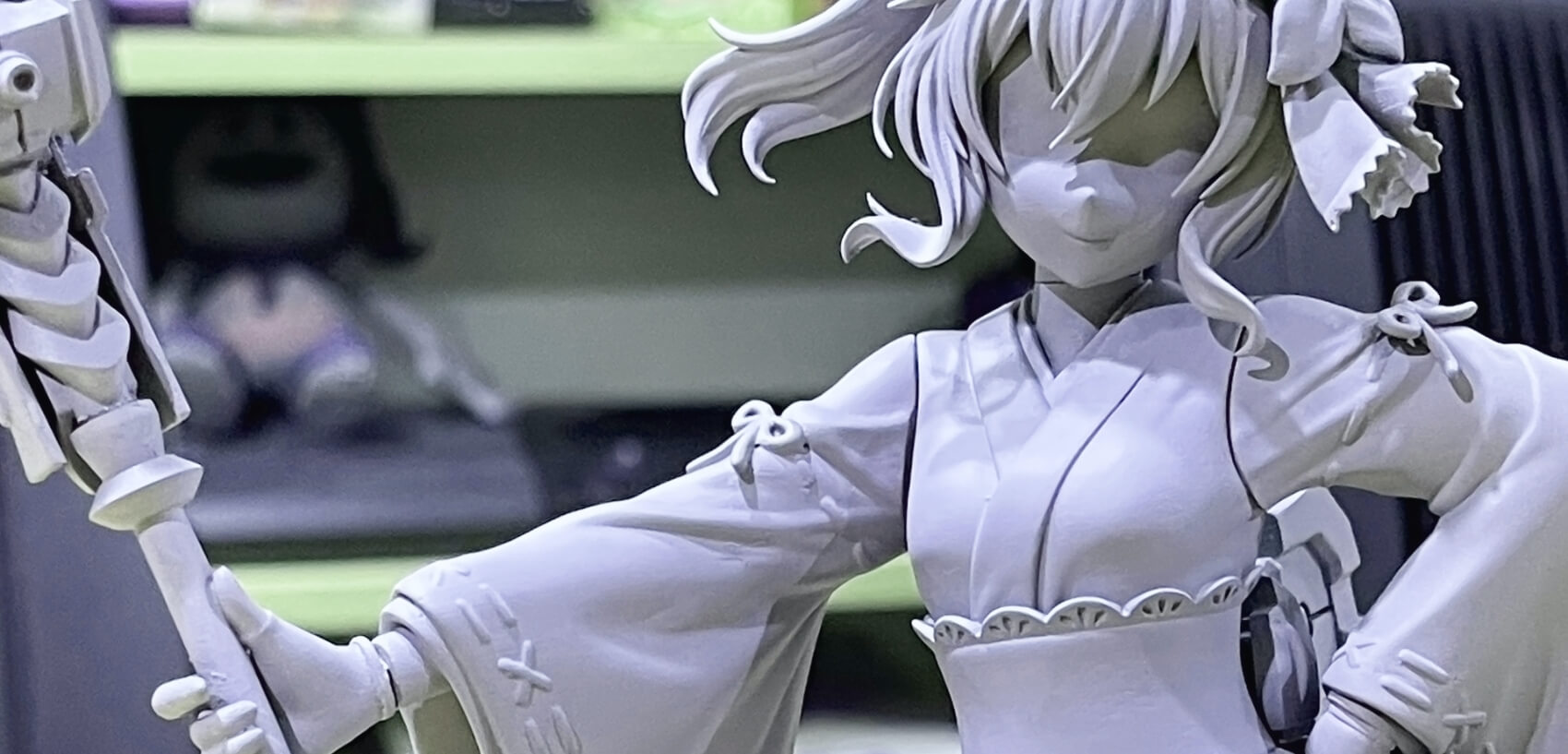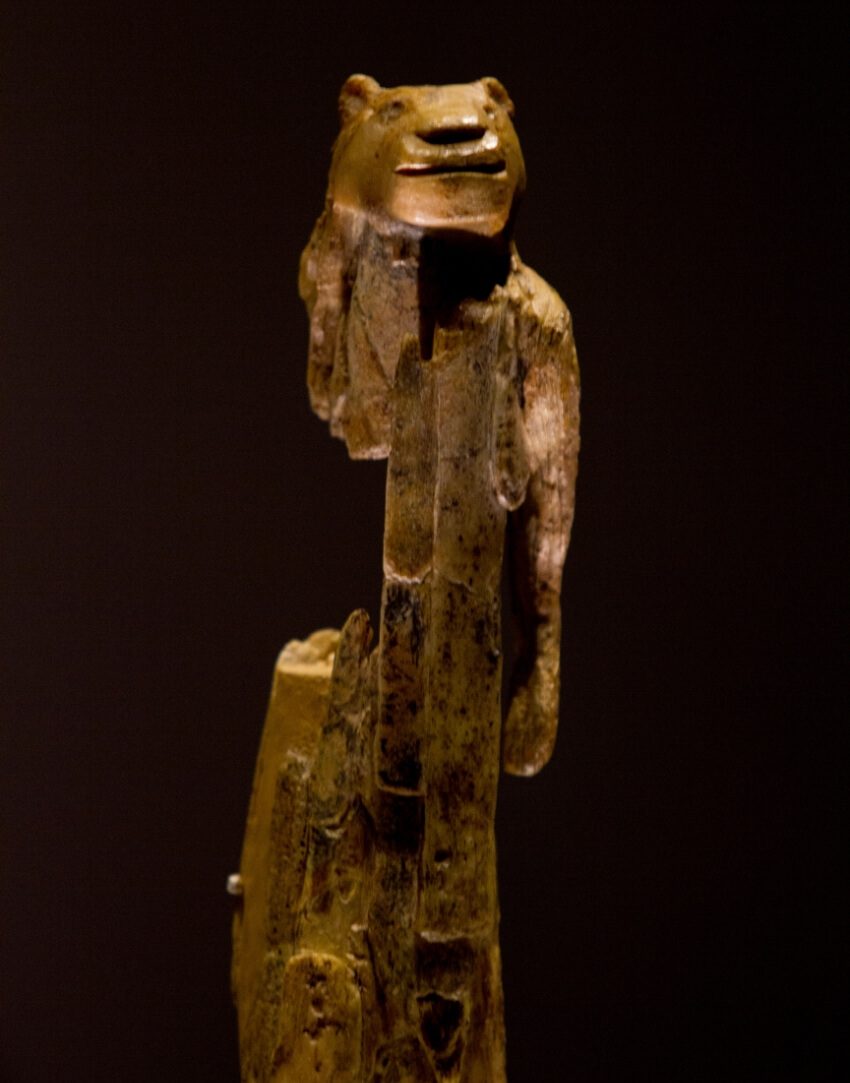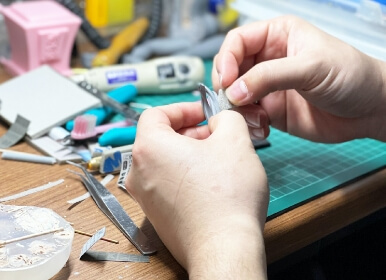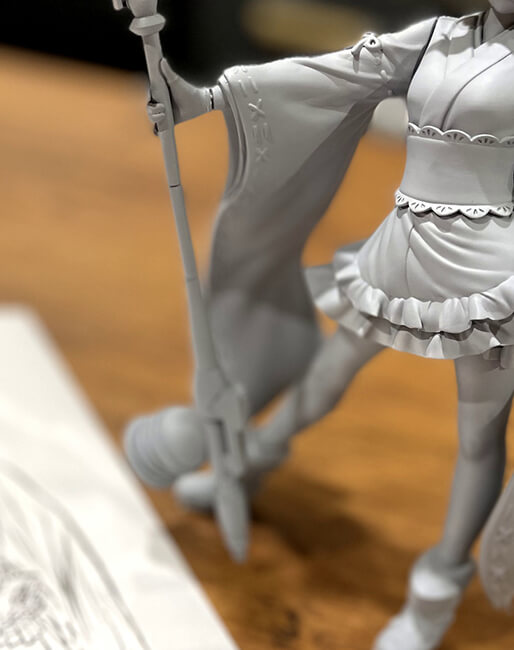Creators as Pillar of “Figure Culture”
Taking Action for Supporting Modelers

Japanese “figure art” culture is said to have become known in the 1980s. In the 40 years since its birth, “figures”, i.e. sculptured models, have become one of the most iconic items of Japanese pop culture. Nowadays, some art universities offer special courses for figure production. Key backseat players in the figures production are the so-called “modelers” . But they are struggling with a structural problem of the industry. To reverse this situation, some initiatives are now under way.
RELATED SESSIONS:
THE COLLABORATION OF “MODELER X ARTIST” / POTENTIAL OF VR CREATION AND VR PENS FOR 3DCG FIGURE

Artistic Passion for “Turning Imagination into Reality”
If figures are to be seen as “imagination projected into reality”, the oldest forms can be found in primitive art, e.g. in the “Venus of Willendorf”, a pottery steatopygous female idol and in ”Lion Man”, a therianthrope figurine. The former is considered to be an idol symbolizing fertility and procreation and the latter a ritual utensil to receive divine revelations from a supernatural spirit. But nobody can be sure of their true purpose. At least, it can be said for sure that humans continue to love creating figures since times immemorial.
Coming back to today’s world: Japanese figures are highly appreciated by international connoisseurs for their outstanding quality. For the sake of definition, what we call “figures“ here are super-realistic 3D sculptures as works of art and usually made of plastic. Most common motives are characters in animation films or games, animals, imaginative creatures and man-made objects like cars and robots. Still fresh in our memories is the “My Lonesome Cowboy”, a figure art by Takashi Murakami that was sold at an auction for US$ 15 million back in 2006.

No Modelers, No Figures - Yet, “Invisible” Modelers …
The production process of figures starts with making prototypes. These are then used to produce molds for casting figures. The quality of the figures is largely dependent on their prototypes. Therefore, “modelers” making prototypes play an important role in production. Japanese figures are now much in demand in the world. If their critical part is taken care of by modelers, one would imagine that modelers are treated as esteemed artists and work in rewarding conditions. But that is not so. Their works are bound by restrictions such that they can hardly follow their artistic interests to their hearts’ content. The reason lies in the complex factors involved here.
One of them is copyright. IP (intellectual property) rights are always attached to well-known characters. Figures are “derivative works produced by a third party based on originals”. If modelers were to show their works for figures of a certain character on their own SNS channels, bashing would be inevitable. Most likely, they would be harshly questioned if they obtained permission for their posts from the IP holders. This situation is in clear contrast to the world of 2D media (illustrations and comics) in the publishing and sales of fanzines, i.e. fan-made magazines where derived works are customarily tolerated as long as they do not harm the interests of IP holders.
The second reason is marketability. There exists practically no community where creators and fans of figures come together. The values of objects or technologies are shaped through relative comparison. To begin with, there is no comparative platform for modelers to present their works next to that of others and to get their output graded in comparative terms to justify their pricing. In other words, there is no yardstick to measure the “right value” of prototype works. As a result, modelers’ skills are relegated to a buyer’s market, as it were.
The third reason is the professional awareness of modelers. As a matter of fact, most modelers treat making prototypes as an extended hobby. They are happy just to get paid for their prototypes to cover the costs of materials. Actually, it is hard to find any modelers who seriously seek to earn their living by their art. Turning prototype production into a hobby is nothing to be ashamed of. On the other hand, in view of the fact that Japanese figures currently enjoy a high reputation on the world market and are in constant demand, such amateurism is quite out of place. Modelers ought to have enough professional pride to ask for an appropriate counter-performance for their work. When more and more people practice modeler’s work as a proper profession, future generations will benefit from the new path laid out before them. As explained so far, the current situation of prototype figure makers is complex and challenging.

Infrastructures for Securing Modelers’ Livelihood
Modelers working as a pillar of “figure art“ culture operate in great hardship. Driven by the common sense of crisis, three leaders step into action to bring about a solution. Nobu Ide, Wacom's CEO and the head of “Connected Ink Village”, a general incorporated association dedicated to continuous support of arts, technology and learning, Terukazu Ikeda, CEO of P.A.I.N.T Inc, promoting various projects for “giving all people a chance to be creative and unfold their talents” and Kohei Hamajima representing ICREA, a company producing films, illustrations and figure prototypes.
The first intended objective is to gain social recognition for the modeling profession. Drawers of 2D illustrators are known as “artists” whereas modelers are not. The idea is to stage an interactive collaboration of two genres of creators as a way of communicating modelers’ creativity. The collaboration schedule up to spring 2022 is designed to create an interactive dialog between 2D artists and 3D figure modelers, hopefully resulting in the creation of innovative works. Connect Ink 2021 presents what has been achieved by this project so far.
Being very concerned about the current situation, Kohei Hamajima proposed his visionary idea for the project. He reveals his ambitious plan by saying “since the prototype production is a part of our corporate portfolio, we know that the situation surrounding modelers is not very encouraging. Professionals with top skills and creativity should be adequately paid for their works. I love launching an ’event for modelers’ - unthinkable before – that can showcase the ’exciting skills of modelers’ for a wider public”.
Terukazu Ikeda, running the actual project as an organizer, shares the same vision. “I feel strongly about the fact that ’not all creators get their due recognition’. Illustrators working in the world of 2D and modelers working in that of 3D should be put on an equal footing when evaluated. I hope to turn more kids into future modelers by encouraging the vision that ’modeler is a job with future potential’. Setting up proper working conditions for modelers is all the more important for achieving this vision so that their skill and talents get their due credit”, he comments.

Indispensable Works of Modelers throughout History
The Kei School (Kei-ha) produced numerous Buddhist sculptures from the late Heian period (late 12th Century) to the early Kamakura period (around 1200). The tradition of Buddhist sculptors originates in Kokei, a master sculptor at the end of Heian period who was succeeded by his son Unkei. As a true genius, Unkei created an epoch of his own in the history of Buddhist sculpture carving. “Kongo Rikishi”, the guardian gods at the southern main gate of the Todaiji temple, are one of the most prominent masterpieces of Unkei produced in collaboration with Kaikei. Two statues, one with open and one with closed mouth, represent Alpha and Omega. These statues, each 8.4 m tall, are full of dynamism and energy running through every artery, show deeply carved eyes and noses and bodies of expressive muscularity – all features which reflect the taste of the times for the austerity in the Samurai-centered culture of Kamakura. Their deformed expressions appear to have a certain similarity to today’s figures.
According to historical records, the world’s largest wooden sculptures were produced in merely 69 days. These gigantic statues consisting of nearly 3,000 modular pieces made by the Yosegi-Zukuri (piece woodblock) technique can hardly be the work of only two craftsmen. Probably, Unkei was in charge of producing “models” which served as a prototype presented to the client and his followers and of supervising the 13 sculptors who then carved piece blocks using these models as a blueprint. This suggests that his role is that of a designer and producer today. In a way, the work of Unkei, an outstanding genius in Buddhist sculpture carving, is comparable to that of “modelers” today. Modelers are like magicians who give tangible shapes to what nobody has ever seen before. Unkei’s masterpiece is a historical testimony to this point.
editor / writer_ Chikara Kawakami


